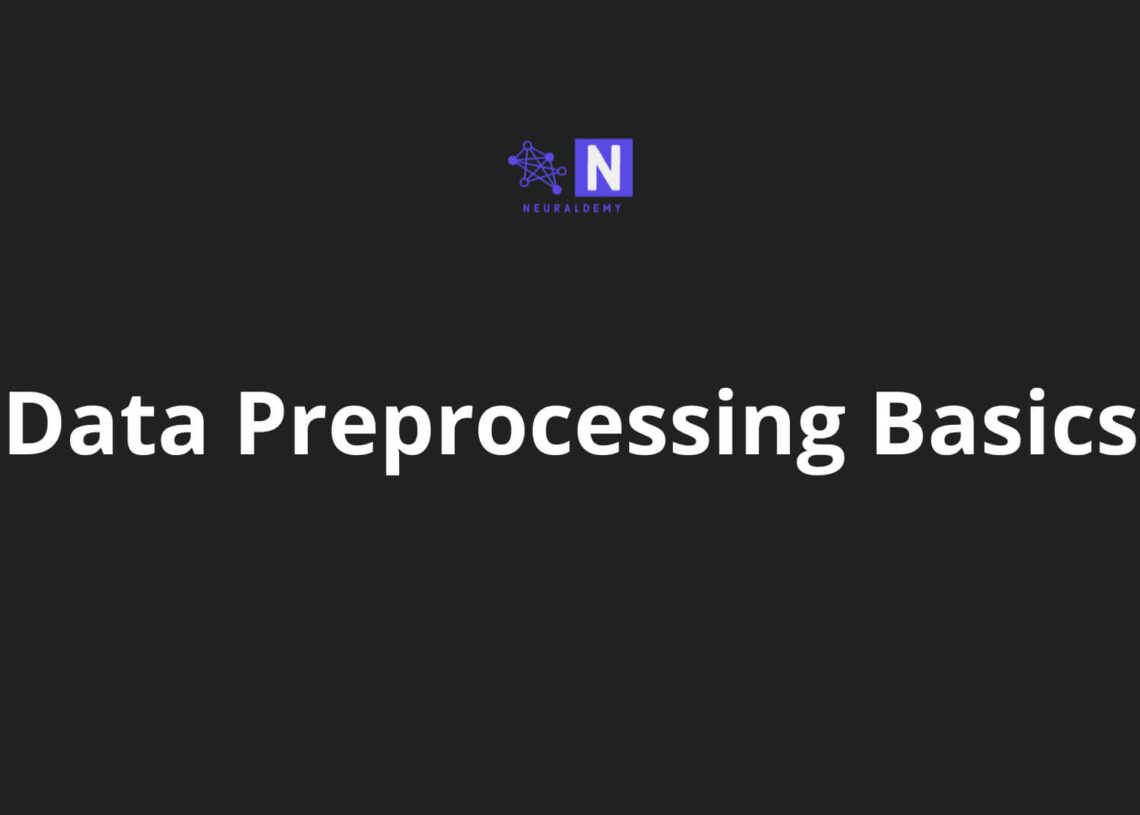Welcome to a beginner’s guide to data preprocessing in machine learning. In the previous few tutorials, we saw some basic concepts and a few models related to Linear Regression. In this tutorial, you will learn about data preprocessing techniques. It involves steps like Exploratory Data Analysis (EDA), Feature Selection, and Feature Engineering. Each step is crucial in preparing your data for the ultimate goal: training a model that can make accurate predictions or insightful decisions.
- Exploratory Data Analysis (EDA): EDA is your friendly introduction to the dataset. By understanding your data, you lay the foundation for informed decision-making.
- Feature Selection: Not all features are created equal. Feature selection is the process of choosing the most important features, ensuring your model focuses on the key factors for accurate predictions.
- Feature Engineering: It’s about creating features that help your model grasp complex patterns and relationships, turning your data into a powerful storyteller.
Before you do anything you should get to know about your data and visualize it. Try to understand your raw data as much as possible. Visualize things. Perform exploratory data analysis and see what your data says. Write down everything and see what features are important and whether you can benefit from creating new features. You can also train your model without doing any feature engineering first and then re-train it after doing feature engineering.
This is the part where you will spend most of your time.
Table of Contents
Data Preprocessing In The Machine-Learning Workflow
Before training a machine learning model, there are several important steps involved to ensure the success and effectiveness of the model. Here is a detailed guide outlining the :
- Define the Problem: Clearly articulate the problem you want to solve with machine learning. Understand the goals and objectives of the project. Define what success looks like and how the machine learning model will contribute to achieving those goals.
- Collect and Prepare Data: Gather relevant data for your problem. The quality and quantity of your data are crucial for the performance of your model. Ensure the data is representative of the problem you are trying to solve. This may involve data collection, data cleaning, and data preprocessing.
- Exploratory Data Analysis (EDA): Analyze and explore the dataset to gain insights into its characteristics. Understand the distribution of data, identify patterns, and check for any anomalies. EDA helps in making informed decisions about feature selection, handling missing values, and addressing outliers.
- Feature Engineering: Select or create relevant features that will be used as input to the model. This step involves transforming or enhancing the raw data to create features that better represent the underlying patterns in the data. It can include scaling, normalization, or creating new features based on domain knowledge.
- Data Splitting: Split the dataset into training, validation, and test sets. The training set is used to train the model, the validation set is used to tune hyperparameters and avoid overfitting, and the test set is used to evaluate the model’s performance on unseen data.
- Choose a Model: Based on the nature of your problem (classification, regression, etc.) and the characteristics of your data, select an appropriate machine learning algorithm. Common algorithms include linear regression, decision trees, support vector machines, neural networks, and more.
- Model Training: Use the training data to train the chosen model. During this process, the model learns the patterns and relationships within the data. The goal is to minimize the difference between the predicted outputs and the actual outputs.
- Hyperparameter Tuning: Fine-tune the hyperparameters of the model using the validation set. Hyperparameters are settings that are not learned from the data but are set before the training process. Common hyperparameters include learning rate, regularization strength, and the number of hidden layers in a neural network.
- Model Evaluation: Assess the model’s performance using the test set. Common evaluation metrics depend on the problem type and may include accuracy, precision, recall, F1 score, mean squared error, etc. Evaluate how well the model generalizes to new, unseen data.
- Iterate and Refine: Based on the evaluation results, iterate on the model, data, or features. This may involve adjusting hyperparameters, collecting more data, or trying different algorithms. The goal is to continuously improve the model’s performance.
- Deployment: Once satisfied with the model’s performance, deploy it to a production environment. This involves integrating the model into the systems or applications where it will be used to make predictions on new, real-world data.
- Monitor and Maintain: Regularly monitor the model’s performance in the production environment. Keep an eye out for any degradation in performance over time. If necessary, retrain the model with updated data or make adjustments to address changing conditions.
Here, we are going to see parts before model training (data preprocessing, cleaning and preparation). Also, EDA is more problem-specific so, you have to try out new datasets to learn EDA.
For this tutorial, we will use different datasets. You can get these datasets from Kaggle or you can request them in the community forum on our website we will share the link.


![[In Depth] Deep Learning: Introduction To Artificial Neural Networks (ANNs) Introduction To Artificial Neural Networks (ANNs)](https://neuraldemy.com/wp-content/uploads/2024/02/Presentation-16_9-1920x1080-px-9-1-350x250.jpeg)
![[In Depth] Nearest Neighbors: Concept And Application Nearest Neighbors](https://neuraldemy.com/wp-content/uploads/2024/01/Presentation-16_9-1920x1080-px-2-350x250.jpeg)
![[In Depth] Stochastic Gradient Descent: Concept And Application Stochastic Gradient Descent](https://neuraldemy.com/wp-content/uploads/2024/01/Presentation-16_9-1920x1080-px-350x250.jpeg)
![[In Depth] Logistic Regression: Concept And Application Logistic Regression: Concept And Application](https://neuraldemy.com/wp-content/uploads/2024/01/Logistic-Regression-350x250.jpeg)
![[In Depth] Nearest Neighbors: Concept And Application Nearest Neighbors](https://neuraldemy.com/wp-content/uploads/2024/01/Presentation-16_9-1920x1080-px-2-75x75.jpeg)

